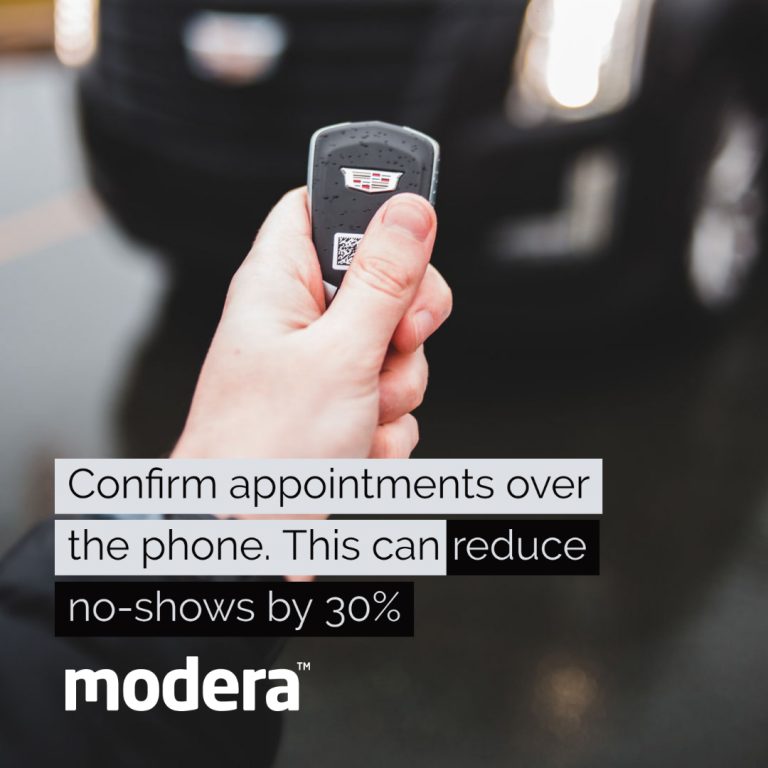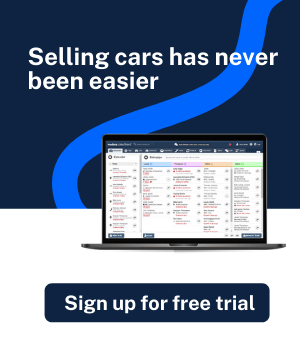The spring of 2020 has been challenging for the automotive industry and we are still nowhere near being back to business as usual.
COVID-19 crisis has put many car dealerships in financial distress.
The good news is, “The New Normal” has presented us the opportunity to reinvent ourselves.

Our customers are more likely to be looking for cheaper alternatives. They are not eager to spend money on the latest and greatest.
This is the time to focus on the importance of used car business and after-sales. Both areas have proven to be a more stable part of the business.
We’ll give you a bunch of tips and tricks to bring back the customers and up the sales, so you could come out of this crisis with flying colors.
For example, learn to prioritize enquires and make the most of each lead. Don’t let any prospects slip away. Check out a car dealer CRM case study to better understand how digital tools may help you.
Back-to-business strategy for car dealerships
Crises leave us with an array of challenges to overcome.
You want to take action to rebuild your business fast and get your sales going. Yet, you must maintain social distancing guidelines and respect people’s concern about the spread of the virus.
We will work through key questions and help you find the answers. How to get your business up and running again.
Let us tackle the issues head on!
Navigating through sales challenges
There are a lot of obstacles to consider in sales. You need to:
- be aware of the status of vehicle production and pipeline,
- deal with sales leads,
- manage the prospects and cancelations,
- work with banks to support approval of customers financing/ leasing applications,
- monitor the sales activities of competitors and respond accordingly.
To get results, create a list of what you have to sell. Your new and used car stock plus your importer’s stock. What’s in the pipeline? What buy-back and trade-in options you have.
Review the portfolio of orders, to better understand the share of successful orders and cancelations. What sells and why?
To keep the business flying, have a clear plan for the next 6 months. Create a tactical plan for the next 6 months. Involve your team and the heads of departments to get their buy-in.
Rebuilding sales
Although the dealership or your showroom may have been closed during the lockdown, it most likely hasn’t stopped inquiries from coming in. Prepare a plan to tackle sales in the most efficient way will be critical to your future. Close sales as fast as possible. This will generate a service business for the future and bring the customers back when they need a new car.
A recent What Car survey stated that online car researchers expected their enquiries to be answered within 24 hours. Even despite the lockdown. This is a clear sign that both consumer demand and expectations are still high.
Set a goal to answer potential customers in 3 hours or fewer. You will dramatically increase the potential to close the deal.
The same survey revealed that 18.2% of respondents were planning to buy their next car as soon as the lockdown was over. The research from Auto Trader also supported this trend. The study showed many people, who use public transport, are now planning to buy a car because of the virus. This means that not only will you have to deal with your backlog but also prepare for a surge in demand.

Focus on aftersales & SAF (service absorption factor)
For the dealership, the most vulnerable area is the new cars sales. This area always follows the economic trends. A new car is not an essential need when you get fired.
Balance the vulnerability of new car sales with the income from other areas.
Focus on customers’ needs. Commit to upsell activities, offers and the importance of follow-up.
In economic recessions, aftersales are not hit as hard as the sales of new and used cars. Many service managers point out about a 20% drop in service and around 30% drop in bodyshop (YoY comparison).
Looking at dealership finances, the SAF factor has been crucial over the last months. It continues to be the backbone of any dealership business, when moving forward.
It is time to figure out what is your service absorption factor (SAF). SAF is the share of all dealership costs after-sales will be able to carry. In an ideal world, the target is a 100%, but it’s more realistic to aim for about 70%. This means the new and used car sales need to cover the remaining 30%.
Get on top of enquires
Now it’s time to tackle the sales leads.
Start with the new enquiries first. The older the lead, the less likely they are still actively looking.
Be proactive about rebooking canceled appointments. If you want something done, do it yourself. Relying on customers to rebook will lose your sales.
Try new tactics, follow-up by sending a video to the prospect. This means they’ll get your message without picking up the phone. This approach lets the customer see you. Now you can start building the emotional connection.
Focus on the strongest enquiries that show the greatest interest.
Prioritize the hottest prospects. Put prospects who are likely to close soon at the top of the list. As you may be working with a reduced number of staff, efficiency and follow-up are key.
Confirm your appointments. This is not the time for missed opportunities! When scheduling appointments a couple of days ahead, be sure to confirm them over the phone. This can reduce no-shows by 30%.

Use digital sales tools for new and used car sales (e.g. CRM, Modera Salesfront, pictures, videos, vehicle configurator, etc.). Build an emotional relationship between the customer and the car. Do that during a visit to the showroom. Also, start building a connection through your website. Optimize your processes with digital sales tools.
Use digital sales tools for service and bodyshop sales (videos, pictures, VHC, etc.). Visually prove the need for work and follow up on offers made.
Keep track of your finances
Finances are a sore subject for any company navigating through an economic crisis. Questions you need to ask yourself:
- Are you losing or making money?
- Is there an urgency to sell ageing stocks to unfreeze capital?
- What kind of buy-back contracts do you have?
It is vital to know where you stand.
Get a detailed overview of how much money you need for salaries, taxes and other payments. This is the time to figure out if you are eligible to apply for any government support.
Set the monthly and quarterly sales and cash flow goals for different departments and in total. Figure out if there’s a gap between goals and reality.
Do you understand the financial state of your business?
Costs. Review all costs. Cut and postpone everything you can.
Team and salaries. Can you cut salaries? Can you reduce the number of staff? Can you use any government support measures?
Liabilities. Do you have any financial liabilities? Can you negotiate better terms?
Payment terms. In an economic crisis, the payment terms of the market and customers change. What were the trends among your customers? What could you change to make your payment terms more appealing and give you more security?
Be on top of finances and prepare for the future
It’s uncomfortable to review the finances during a crisis, but don’t hide your head in the sand. To deliver a good profit and assure a buffer for unexpected setbacks, you must know what and why it happens.
Ask yourself if you are ready for the unexpected. Make it a priority to build your organization, processes, databases and financial stamina.
Ask yourself what you can do to improving your car dealership’s profitability.
Reorganizing and adapting to the New Normal
A sustainable business can adapt. Any crisis is hard, but it’s how you act under pressure that sets the best apart from the rest.
Adapt! To the changing demand from customers. The opportunities that are opening up on the market because of the changes.
Figure out the opportunities within the organization. Can you change the processes and the team? What needs to be changed to guarantee success?
Reacting to the outside influences
Customer behavior change during the crisis is out of your control. Yet, it’s not the only thing you have no control over.
- Targets,
- competition,
- political and environmental issues,
- market,
- manufacturers and importers,
- IT,
all add to the uncontrollable challenges from the outside.
Create a strategy to make the best of these challenges! Can you find new opportunities opening up on the market? Why not rebrand yourself as the most customer friendly dealership?
Safety first!
An important part of your strategy is keeping your staff and your customers safe.
As customers remain alert about the virus, display your safety measures with pride. The more you can show this information, the more reassured your customers will feel.
Use videos or pictures to show the safety measures you’re taking. Make it easy for anyone to follow and understand. Let it be one cornerstone of your successful return to business.
Internal inventions
It’s a great time to test the internal processes of the organization. Ask tough questions.
- How did you treat your team?
- Were they motivated during uncertain times, or did they develop mistrust?
- Who and when should you let go?
- What would you rate the communication within the company? Is communication clear from the upper management level down to the employee level?
Communication is key
Figure out what aspects you need to improve. Have regular meetings in place. Guarantee a good communication between the management and team.
Develop more trust and transparency within the company. Trust helps to calm the minds of the employees and give them a sense of safety and motivation.
What employees need to hear is a clear message from the general manager. Let them know that it may not be easy, but they still have their jobs and salaries.
Start focusing on the mental and physical health of the management and team. Encourage them to speak up when feeling overwhelmed or exhausted. It is important to make sure they are fit to deal with the load of the company on top of personal and family challenges. Make a plan for support if necessary.
Outside influences in the car dealership
What happens outside the company also affects the processes within the company.
Consider how to react when a member of your staff of 50 people gets infected. To reduce the risk for your business, you need a plan on how to deal with it. Here are two options:
Option 1
Everybody works at the dealership knowing the risk. Everyone must follow social distancing rules and use all measures to cut the risk.
Goal: keep the business working and keep making money.
Problem: should someone get infected, the entire business must close for 14 days, according to existing practice.
Option 2
Everyone works in shifts (e.g. 2-3 people at a time). Agree within each team that everyone follows social distancing rules. Distance from the members of other shifts and people from outside the business.
Goal: should one person from one shift get infected, the other shifts can continue working.
Problem: consider working times, workload, costs, sales.
When making these decisions, guarantee transparency and open communication. It is best to discuss the situation and your options with your team to set a plan of action.
Improve your processes while gathering information
To plan for the future, you must have information. Figure out where and how can you get reliable data. Make sure you’re basing your decisions on facts and adequate information.
When gathering information, take notes. How easy was it to find information about the status of your business? Was the information clear and transparent? Did it seem reliable and trustworthy? Did it reflect the status of the business and help make predictions for the future?
Once the information is there and the decisions made, check how long it took to make these decisions. Were you able to take quick, yet transparent and data-based decisions? Did emotions get in the way?
By evaluating the flow of this process, you’ll be able to see the aspects that need more work. Should you change the way you are storing necessary data? This will help you prepare for future challenges and avoid any bottlenecks.
Failing to plan is planning to fail
Business owners and top managers have mentioned learning the lessons from previous crises. Improving areas inside the company during the good times have helped them manage better now. This means it’s time to get planning!
Consider the following:
- Where are you now and why?
- How long can we survive the current situation? Create sales, stock and financial status reports for all departments in your business. Make sure you know how many sales you need to stay above the water and what you need to focus on.
- Where would you like to be in 6 to 12 months?
- What will you do within the next 6 months?
- Where do you think the market and your business will be? Take steps to create the journey forward. Create a plan with checkpoints to evaluate your progress.
- What do you need to do? Create an absolute minimum sales plan that lets you survive until the end of the year. Add a 20 to 30% buffer to generate emergency reserves for potential problems.
Next, create the market worst-case scenario with a financial plan to survive it.
Combat the crisis and build a future
Once you have detected the weak points in your company, you now know what to change and how to do it.
Being on top of everything is difficult, but by having a plan and sticking to it, the results will follow. Be systematic, focus on the needs of your customers and support your team.
Now, put on your thinking cap and start building a bright future for your company.
_______________________
Cover photo by Norma Mortenson from Pexels

